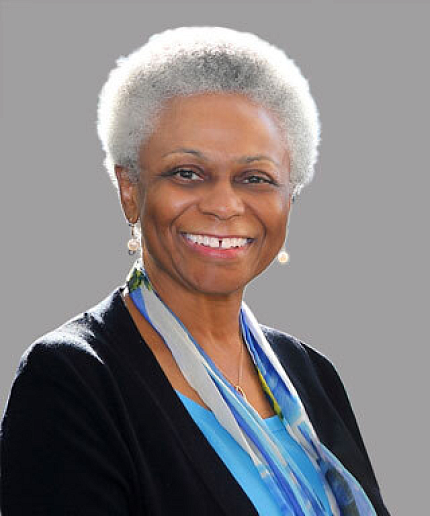Engagement Across Diverse Environments
NIMHD Leads Workshop on Inclusive Participation in Clinical Research

The historical and current underrepresentation of racial and ethnic minority populations in clinical research has resulted in uncertain generalizability of study findings and limited the understanding of health disparities.
In light of greater public recognition around the importance of diversity among research participants during the Covid-19 pandemic, the National Institute on Minority Health and Health Disparities (NIMHD) led a 2-day workshop on inclusive participation in clinical research. Speakers and attendees representing various sectors of the clinical research enterprise explored promising practices and strategies for improving inclusion. The workshop placed particular emphasis on meaningful inclusion of individuals from racial and ethnic minority populations.
NIMHD Director Dr. Eliseo Pérez-Stable, Office of Research on Women’s Health Director Dr. Janine Clayton and NIMHD Deputy Director Dr. Monica Webb Hooper opened the event. They shared research enrollment statistics, federal inclusion efforts and the importance of inclusive participation.

“Greater diversity [in clinical research] is needed…largely because of its importance for community confidence, acceptance, trust and overall generalizability,” Webb Hooper emphasized.
Keynote speaker Dr. Otis Brawley discussed clinical trials in cancer research and their role in reducing health disparities.
“Clinical trial participation is a way of assuring better care,” because individuals who participate in clinical trials receive better health care than individuals who do not, he noted. “[For breast cancer care, compared to White women] Black women are two-thirds as likely to get less than optimal care...and Hispanic [women] are about three-quarters as likely to get less than optimal care.”

Brawley invited retired U.S. Army Col. Jimmie Slade of Community Ministry of Prince George’s County, Md., to address building trust with local communities and how organizations in them can “translate” trust in the community group to trust in a research institution.
Day 1 focused on steps to improve inclusivity before conducting a study. Panelists discussed appropriate study samples, hiring diverse research teams and engaging communities. Dr. Marvella Ford shared how her cancer center “include[s] community reviewers as score-driving reviewers in [center]-funded research proposals.”
Presentations also highlighted factors to consider during the study, such as engaging referring physicians as research partners and the ethics of participant compensation.

To illustrate community-engaged recruitment, Dr. Namratha Kandula presented her work with South Asian populations in Chicago. She described how her “community and clinical partners provide space for study visits…which means [the] participants can travel to a familiar site, one that is closer to where they work or live.”
Dr. Debara Tucci, director of the National Institute on Deafness and Other Communication Disorders (NIDCD), detailed NIDCD efforts to enhance inclusive participation, such as requiring that “investigators…plan for engagement of underrepresented populations up front.”

Day 2 began with actions researchers can take after a study that can improve inclusivity in the future. For example, the National Academies of Science, Engineering and Medicine’s Consensus Report on Improving Representation in Clinical Trials and Research recommended that journals require information on representation in trials and studies submitted for publication.
In his talk on metrics, Dr. Leonard Egede encouraged researchers to evaluate the different recruitment strategies used and examine predictors of non-participation.
Three panels discussed promising practices for conducting clinical research with specific populations:
- Situating research offices in communities and including community representatives on research teams, advisory/governing boards and publications
- Special consent considerations for children, older adults, incarcerated persons and people with limited English proficiency
- Sexual and gender minority groups, pregnant and lactating people, persons with disabilities, rural populations and socioeconomically disadvantaged populations
Panelists raised the importance of offering flexible ways to provide consent, how inclusion builds trust and the need for research teams that include individuals who are members of the populations being studied.

The final session featured perspectives from community and patient advocacy groups, academia, pharmaceutical companies, federal and non-federal funding entities and policy organizations. Panelists discussed funding challenges that limit engagement efforts, emphasizing the importance of building long-term relationships with communities as equal partners.
NIH Chief Officer for Scientific Workforce Diversity Dr. Marie Bernard concluded the workshop with a presentation on ongoing NIH efforts to strengthen diversity, equity, inclusion and accessibility (DEIA) in the NIH workforce and in NIH-funded research, including the UNITE Initiative and the newly launched Community Partnerships to Advance Science for Society program.
“One of the things that is really important in helping people to understand the benefit [of DEIA] is the data that show that when you have diverse perspectives, you have better science, greater creativity [and] greater innovation,” she said.
Visit https://go.nih.gov/6gAHlcI to learn more.
